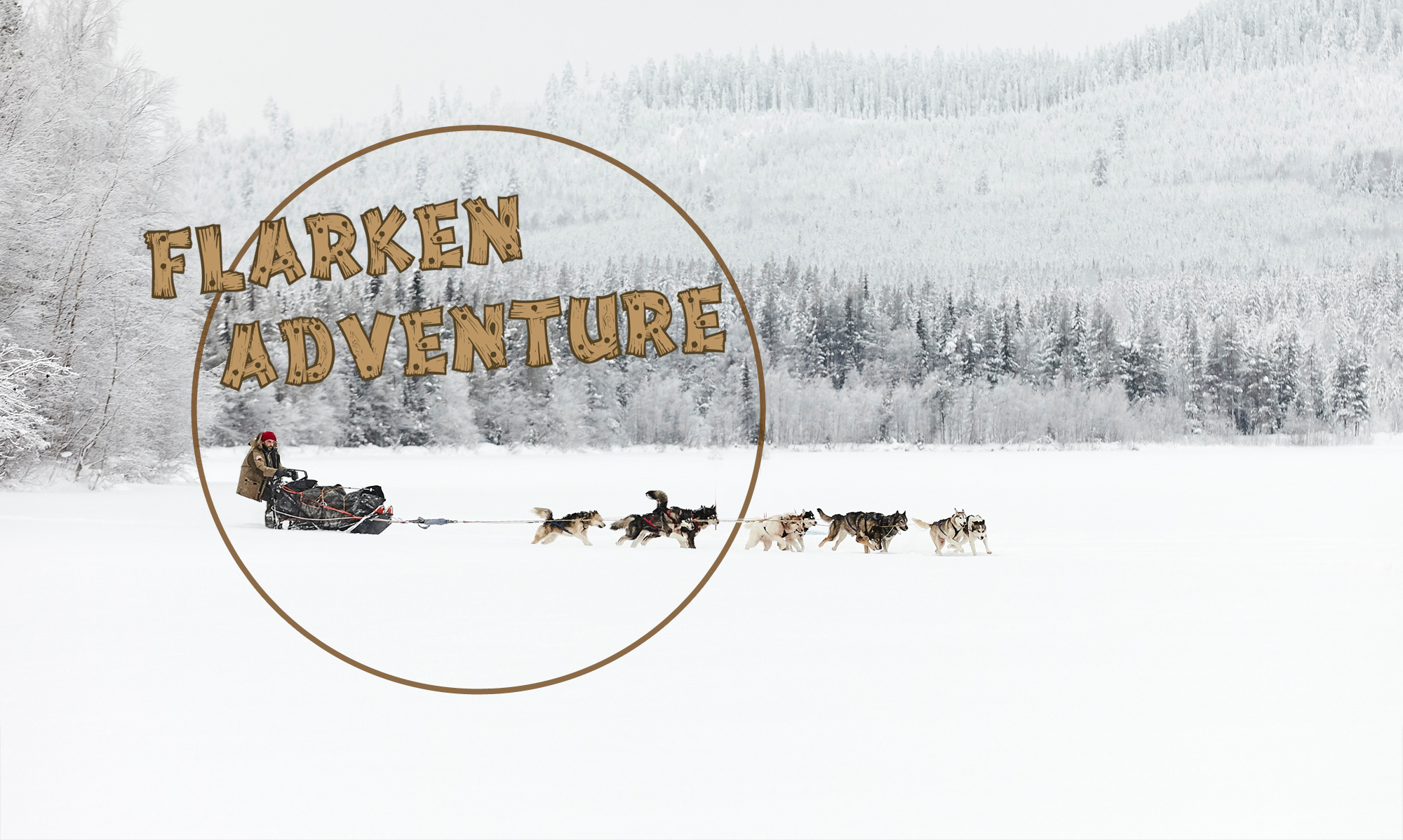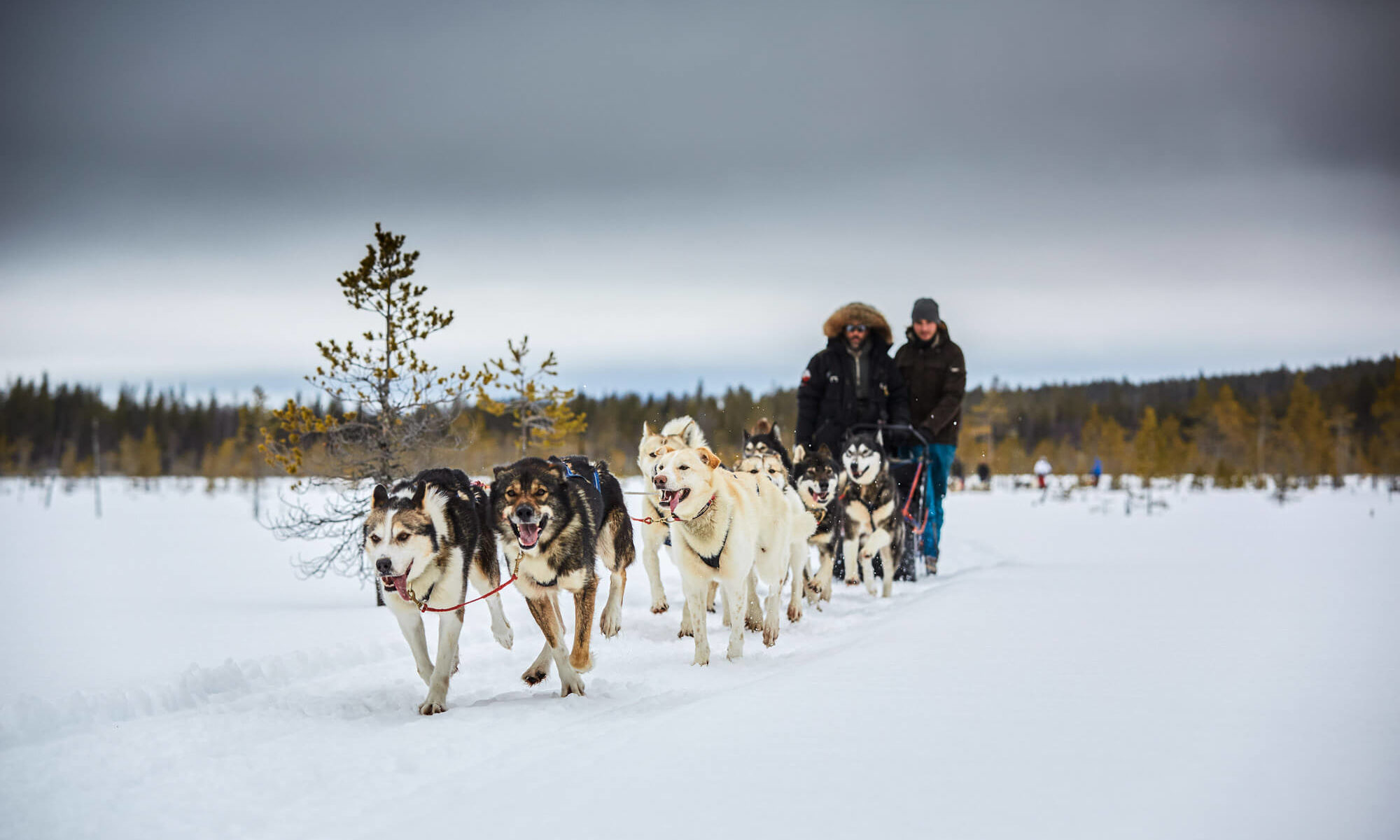The word “breed” refers to a subdivision of a species, developed through selective breeding and defined by specific inherited physical traits. Often associated with the Siberian Husky, sled dogs actually encompass a variety of breeds. In this article, we present the most prominent ones. These Nordic breeds come from different polar regions and have evolved distinct characteristics depending on the harsh environments they adapted to, as well as the people they lived and worked with.
Siberian Husky
The Siberian Husky is undoubtedly the most recognized sled dog by the general public. Originating in Eastern Siberia, this breed was developed by the Chukchi people. More than just a sled dog, the Husky also assisted in hunting and helped care for children.
According to Chukchi legend, the Siberian Husky was born from the union of a wolf and the moon. Enchanted by her beauty, the wolf howled night after night until the moon descended to join him—thus the Husky was born, bearing a wolf’s appearance and a crescent moon-shaped tail. The legend also says that during full moons, Huskies and wolves still howl in longing, asking the moon to return. The Chukchi believed that after death, their dogs awaited them at heaven’s gate to accompany them into the afterlife.
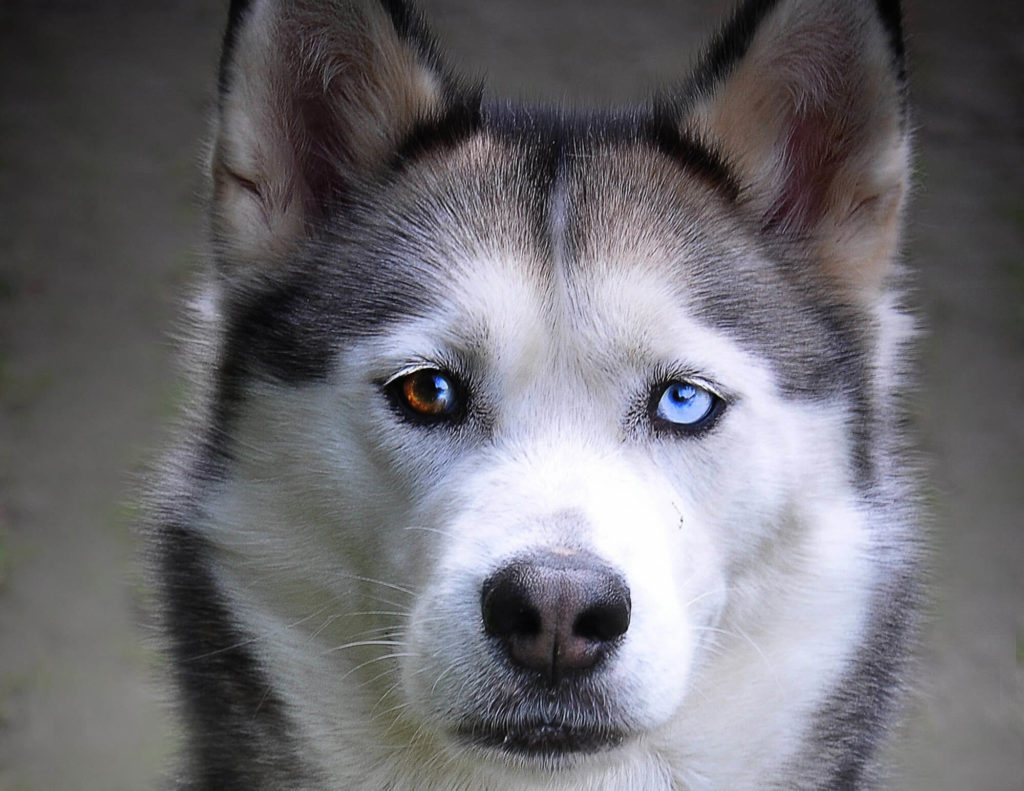
Famed for their striking blue or heterochromatic eyes (one blue and one brown), Siberian Huskies are affectionate and highly intelligent. These traits make them popular companion animals, though they remain true working dogs at heart. Independent and energetic, Huskies require plenty of exercise and mental stimulation. They are very social animals, thriving in groups—canine or human—and do not tolerate isolation well.
While smart, Huskies are also stubborn. They need patient, consistent training and won’t follow commands blindly. They respond best when they understand the reason behind a request. With a strong prey drive and a notorious talent for escape, they are prone to wandering.
Medium in size, Siberian Huskies typically stand 40–60 cm (16–24 in) tall. Females weigh 15–20 kg (33–44 lbs), while males range from 25–30 kg (55–66 lbs). Fast and enduring, they can run at speeds of 16–18 km/h (10–11 mph), though their pulling strength is limited to about their own body weight. For heavier hauling, the Alaskan Malamute is more suitable.
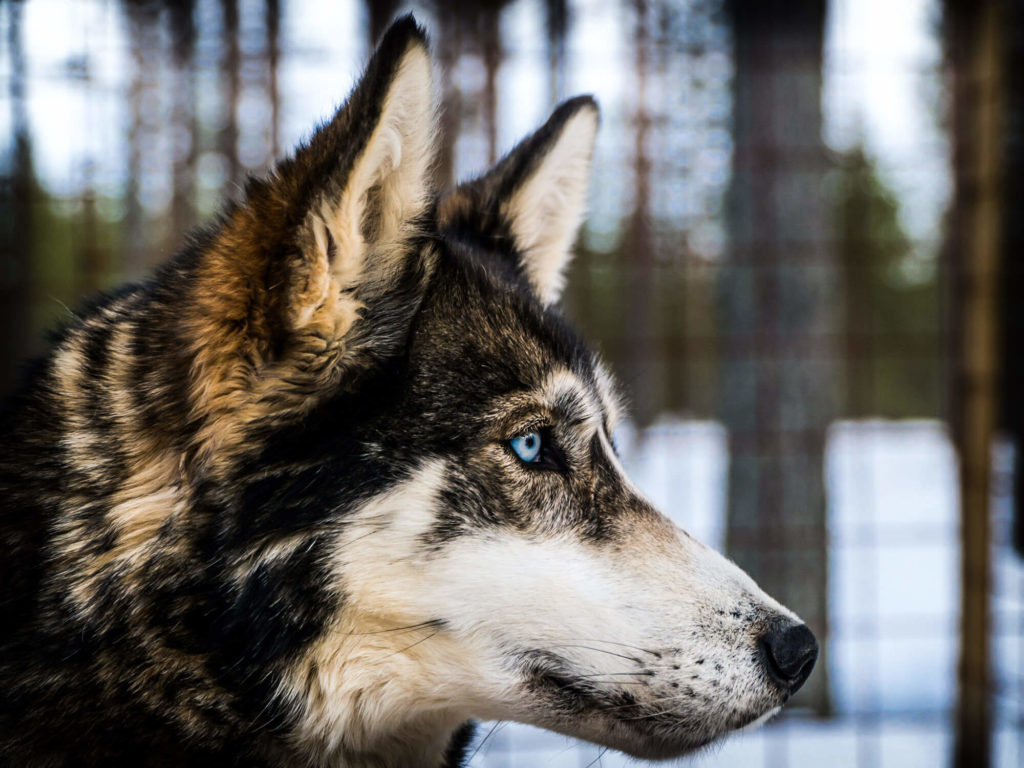
Alaskan Malamute
The Alaskan Malamute is the largest and most powerful of the sled dog breeds. Named after the Mahlemut people—originally from Siberia and later settled in Alaska 2,000–3,000 years ago—these dogs were used to haul heavy loads over long distances in brutal arctic conditions. They also played a role in hunting, capable of fighting off bears and helping locate seals.
Built for extreme climates and hard labor, the Malamute has a strong bone structure and powerful muscles. Its thick double coat provides excellent insulation. Females weigh between 25–30 kg (55–66 lbs), and males between 40–60 kg (88–132 lbs). Exceptionally strong, they can pull 1.5 times their body weight. The world record for weight pulling was set by a Malamute hauling 2,450 kg (5,400 lbs)! However, they are not very fast, averaging around 7–8 km/h (4–5 mph).
Despite their teddy bear looks, Malamutes are calm, loving, and devoted to humans. However, they can be aggressive toward other dogs due to their survival instincts and hierarchical nature. A firm, fair, non-violent upbringing is essential to earn their respect. Once boundaries are set, Malamutes make wonderful companions. Like all sled dogs, they need regular physical activity and mental stimulation.
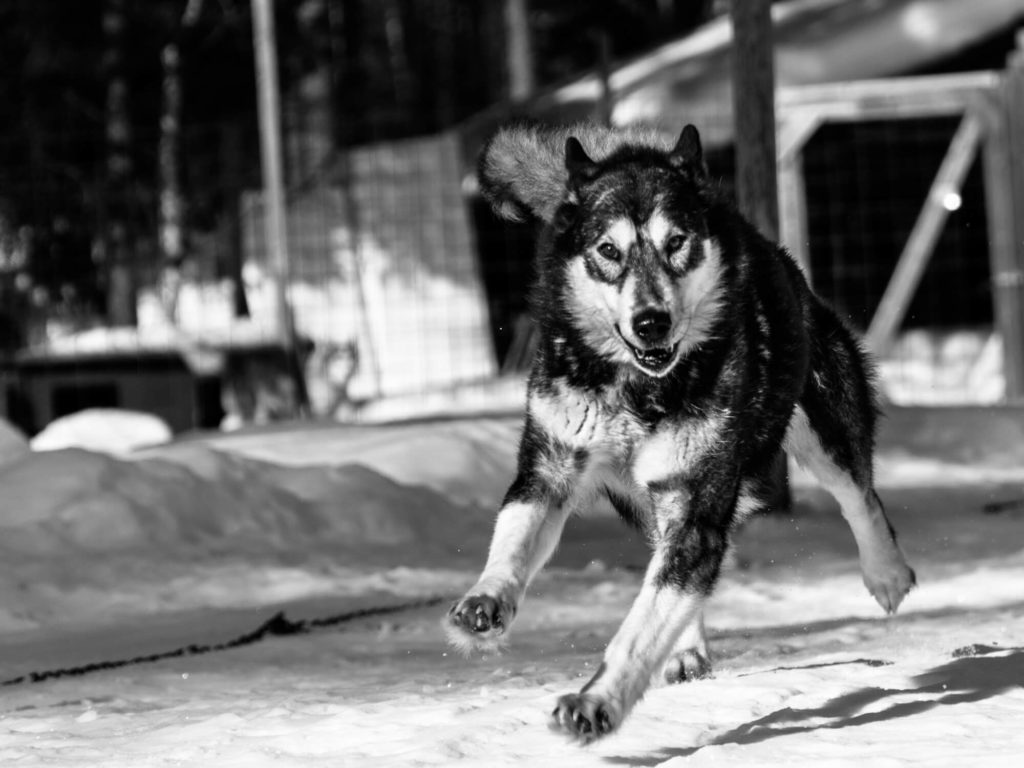
Samoyed
The Samoyed hails from Siberia and was bred by the indigenous Samoyedic tribes. These versatile dogs were used for sledding, herding reindeer, and hunting. They were also trusted family members—so much so that they slept inside dwellings to provide warmth.
Always white or cream-colored, Samoyeds have a thick, dense coat that protects them from arctic cold. They’re similar in size to Siberian Huskies but have been bred more for appearance than performance over the years. As a result, they are less strong and fast compared to other working sled dogs.
Of all sled dog breeds, Samoyeds are the most vocal—often barking for attention or excitement. Despite this, they are gentle, obedient, affectionate, and make excellent companion animals.
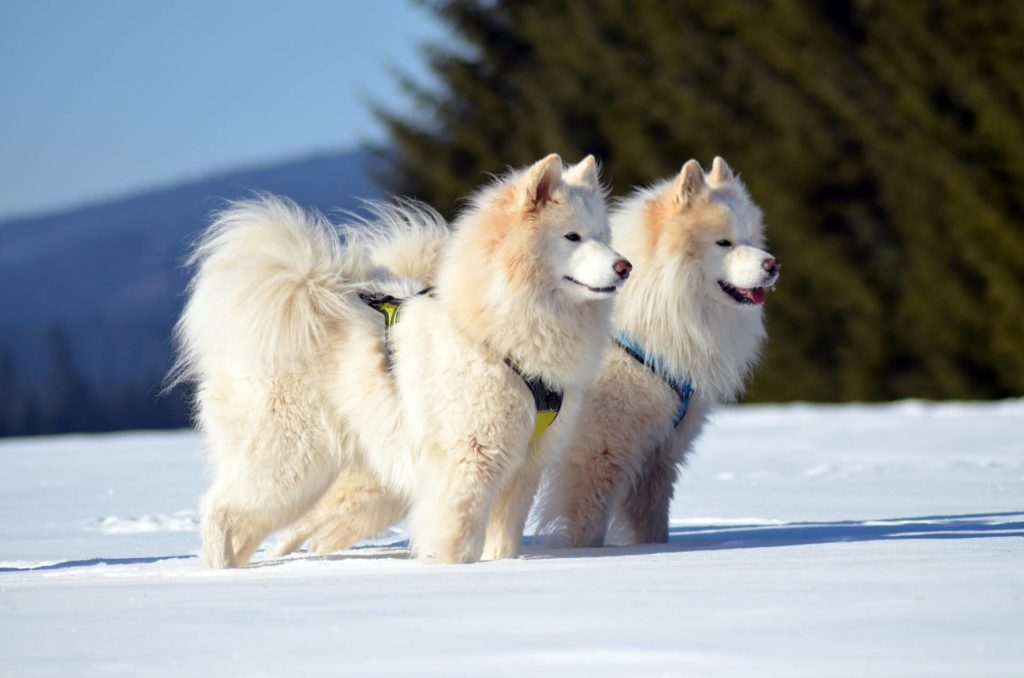
Greenlander
A traditional dog of the Inuit people of Greenland, the Greenland Dog is the archetype of the sled dog. To preserve the purity of this UNESCO heritage breed, it is strictly forbidden to bring outside dogs into Greenland.
Geography has influenced the breed’s build. On the colder, denser ice of the West Coast, dogs tend to be heavier and stronger. On the slightly milder East Coast, they are leaner and lighter for navigating fragile ice.
Almost as fast as the Siberian Husky and nearly as strong as the Malamute, the Greenland Dog is extremely versatile and hard-working. They thrive on challenges—preferring difficult, untouched trails over groomed, easy paths. These traits make them the go-to choice for polar expeditions.
Used to living in packs, Greenland Dogs are highly hierarchical and rustic. They are not ideal for life as household pets, as they have retained a strong wild streak. Earning their respect requires consistent leadership—not through dominance, but through firm, confident handling. While they can be willful, they are not aggressive and remain deeply affectionate with humans.
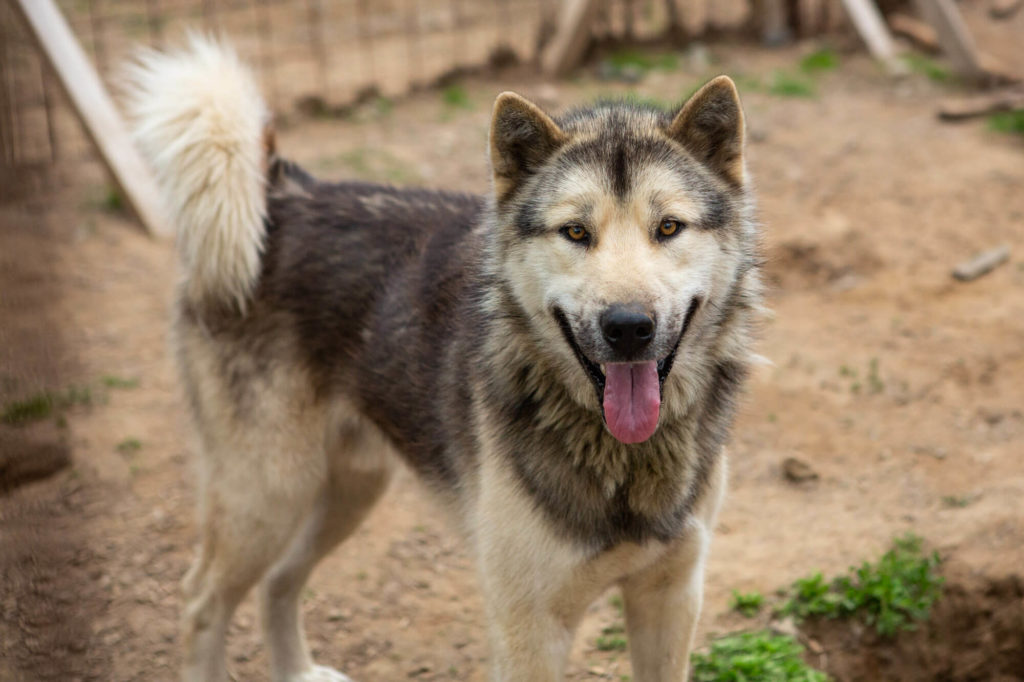
Canadian Eskimo Dog
Closely related to the Greenland Dog, the Canadian Eskimo Dog (also called Qimmiq in Inuktitut) is one of the oldest indigenous sled dogs in North America. The two breeds are genetically nearly identical, as the frozen Baffin Bay historically allowed for interbreeding.
By the 1970s, the breed had nearly vanished, with only 200 individuals remaining. Conservation programs have since helped it recover, though it remains rare.
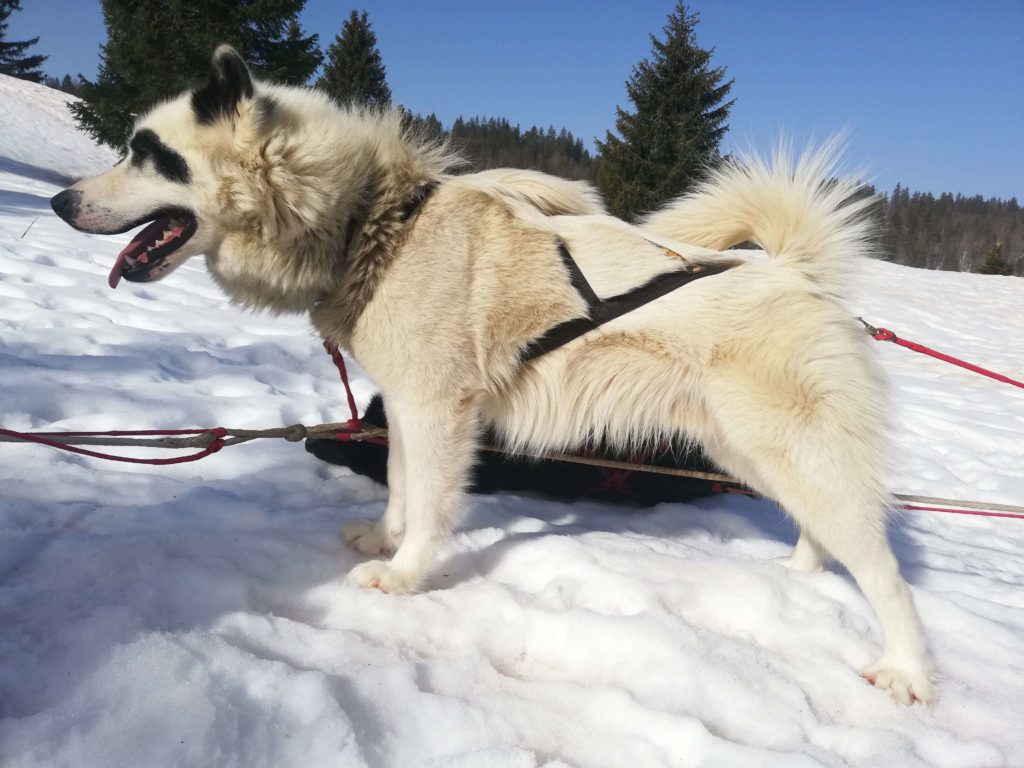
Alaskan Husky
Unlike the other sled dogs, the Alaskan Husky is not a recognized breed, but rather a type—a result of purposeful crossbreeding to optimize performance. Developed in the 20th century during Alaska’s gold rush, its origins are rooted in necessity.
When gold was discovered in Dawson (Canada) in 1896, thousands rushed through Alaska to try their luck. The harsh terrain forced them to carry tons of supplies over rugged mountains. The Canadian government mandated that each person travel with enough provisions for a full year—totaling nearly a ton per person.
This need for transport led to the use of sled dogs. Large dogs with long coats were gathered (often stolen) and brought to Alaska. They were bred with native and indigenous dogs, creating the Alaskan Husky—a mix of strength, speed, and stamina.
Over time, breeders refined the type based on specific performance needs: long-distance endurance, mid-distance work, or sprint racing. Alaskan Huskies are lean, fast, and athletic but have less protection against the cold than Arctic breeds. Their thin coats and delicate paws require careful maintenance, including protective booties and balm.
Friendly and less prone to dominance than Malamutes or Greenland Dogs, Alaskan Huskies tend to have excellent temperaments. At Flarken Adventure, we love our Greenland/Alaskan crosses for their resilience, drive, and balanced personalities.
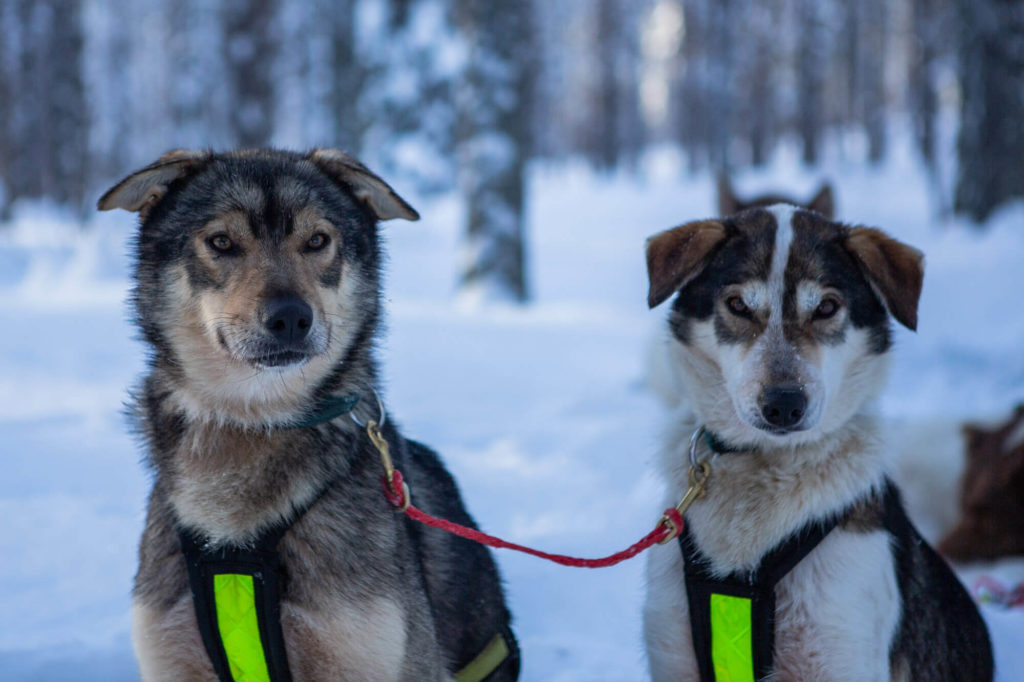
Taimyr Dog
The rarest of all sled dogs, the Taimyr originates from the Taimyr Peninsula in northern Siberia. Not officially recognized and endemic to the region, these dogs were traditionally used for herding reindeer, pulling sleds, and hunting.
The Taimyr gained international attention thanks to French explorer Gilles Elkaim. During his 12,000 km solo Arctic expedition from Norway to the Bering Strait (Artika 2000), he acquired Taimyr dogs from native people, trained them, and completed the journey with their help. The dogs proved strong, reliable, and eager to work.
After the expedition, Elkaim brought the dogs back to Europe and continued the bloodline. Today, the breed remains exceedingly rare, though highly prized by those who know them. At Flarken Adventure, we’re lucky to have one—Morock—a direct descendant from that historic expedition.
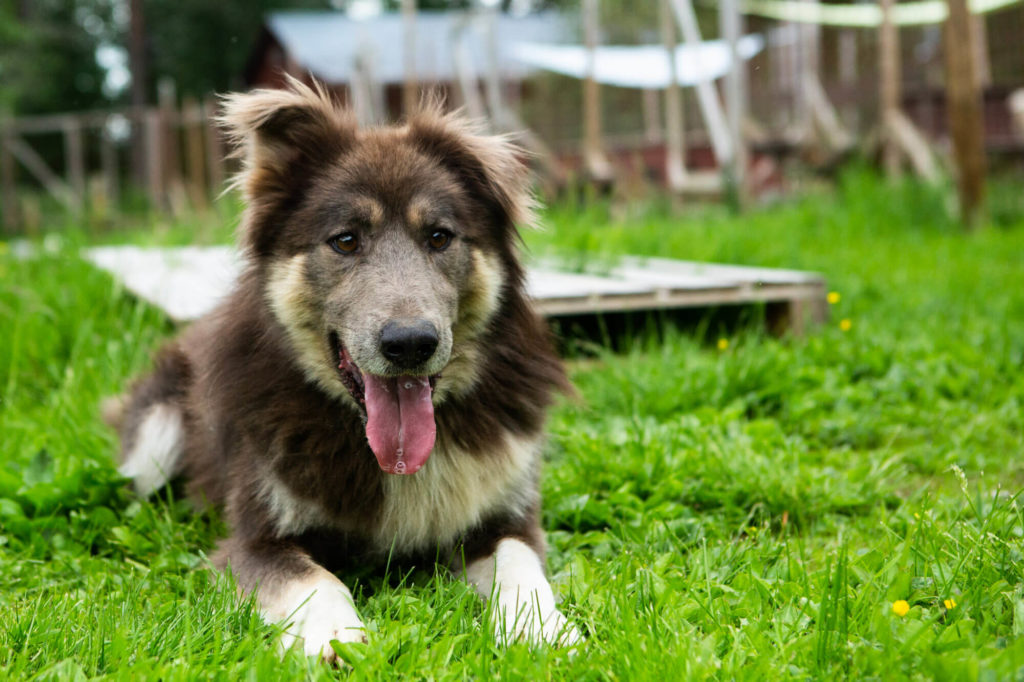
Read also :
This post is also available in:  Français
Français
